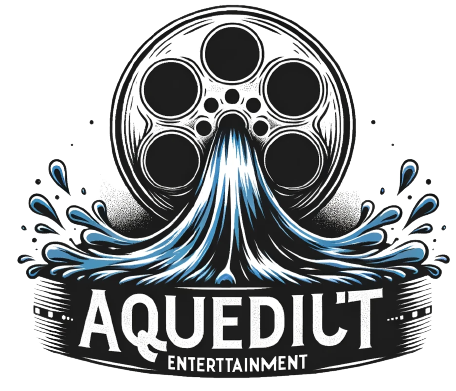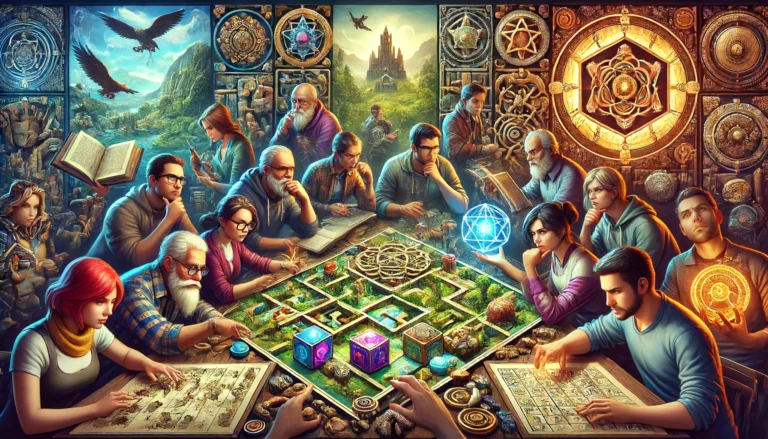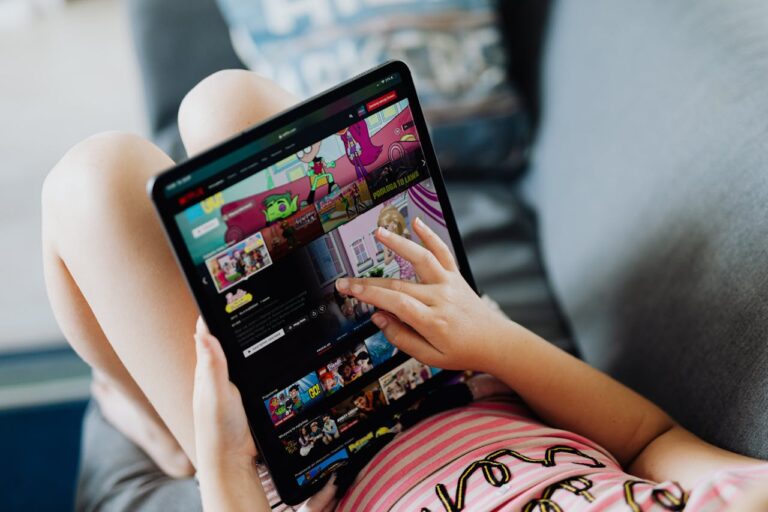The Role of User Experience Design
User experience design—oh, what a pivotal player in the grand theater of digital entertainment! It’s a tapestry woven with processes and methodologies, all aimed at crafting interactions that feel natural and inviting on various applications and platforms. When designers put the spotlight on users’ needs and whims, they unlock experiences that are not just captivating but also instinctively understood. This comprehensive approach is like a well-oiled machine; it allows users to glide effortlessly through content, boosting their satisfaction levels while paving the path for repeat visits.
But wait—the magic doesn’t stop there! A stellar user experience can ignite emotional bonds between audiences and digital creations. Consider those carefully curated design elements: vibrant visuals paired with interactive features—they wield tremendous power over how users interpret a platform’s essence. Engaging with an interface that sings in harmony can lead to deeper immersion and sheer joy, transforming mere interaction into unforgettable experiences. Hence, pouring resources into user experience design isn’t just wise—it’s downright essential for any entity aiming to flourish amid the bustling chaos of digital entertainment’s competitive arena!
Crafting Intuitive Interfaces for Seamless Interaction
Crafting interfaces that grab hold of user engagement is nothing short of vital in the vibrant universe of digital entertainment. Picture this: an intuitive layout that dances with ease, guiding users through a labyrinth of content and features, almost effortlessly! Imagine key elements—those consistent visual cues, crisp labels, and responsive designs—all weaving together to elevate user satisfaction to new heights. When developers shine a spotlight on usability, they conjure experiences that truly resonate with audiences, cutting down frustration like a hot knife through butter while amplifying sheer enjoyment.
But wait—there’s more! User feedback emerges as the lifeblood for fine-tuning interface designs. Sourcing insights from usability testing? Absolutely essential—it empowers designers to pinpoint those pesky areas begging for improvement. The magic happens when they iterate existing models based on genuine user encounters; it’s all about empathy in this intricate design dance. In the end, achieving seamless interaction isn’t just a possibility but a promise when creators genuinely embrace user needs and preferences throughout every twist and turn of development—a harmonious symphony where technology elevates the very essence of entertainment itself!
Case Studies of Successful Implementations
Delving into the realm of custom digital entertainment solutions reveals a treasure trove of insights that illuminate effective strategies. Take, for instance, a gaming company that undertook an ambitious overhaul of its user interface—a bold move aimed at elevating the player experience to new heights. Through rigorous user testing—an exhaustive process, mind you—the team unearthed numerous pain points lurking in navigation and interactions. This investigative journey culminated in the birth of a more intuitive layout, one that resonated with users on multiple levels. The outcome? A remarkable surge in player engagement and retention rates soared skyward, all underscoring the profound power of user-centered design.
Then there’s the captivating case of a streaming service that boldly embraced machine learning algorithms to weave personalized content recommendations into its fabric. By harnessing vast oceans of user data—think gigabytes upon gigabytes—the platform generated tailored viewing suggestions almost like magic! This not only ramped up user satisfaction but also forged a deeper connection between users and their beloved platform. As subscription numbers climbed steadily upward, it became crystal clear: these cases vividly illustrate how bespoke solutions can catalyze significant transformations within the ever-evolving landscape of digital entertainment.
Learning from Real-World Applications and Outcomes
The real-world landscape of custom digital entertainment solutions brims with tantalizing insights, illuminating best practices and savvy strategies. When we peer into the successes that shimmer in this realm, a clear theme emerges: the crucial dance between technology and user desires. Take, for instance, an eye-catching project—a streaming platform that wove together sophisticated user analytics like a tapestry of data-driven magic. This innovative twist allowed for content recommendations to be tailored with an uncanny precision, catapulting viewer engagement to new heights. The result? A happier audience basking in satisfaction while retention rates soared like kites on a windy day.
Diving deeper into diverse industries unveils a kaleidoscope of success stories—each one unique yet interconnected. In the vibrant gaming sector, a bespoke virtual reality experience sprang to life at a major event, melding immersive storytelling with interactive flair. Attendees didn’t just see it as entertainment; they hailed it as an ingenious promotional powerhouse for the franchise itself! Such narratives underscore an often-overlooked truth: integrating user feedback isn’t just beneficial—it’s essential to crafting compelling experiences. By dissecting these rich implementations, companies can refine their tactics and adeptly navigate the shifting tides of audience expectations.
Challenges in Developing Custom Solutions
Crafting bespoke digital entertainment solutions is often a wild ride, riddled with challenges that can throw a wrench into the works and stifle efficiency. Take, for instance, the whirlwind of technological change swirling around us. New tools and platforms pop up like mushrooms after rain, making it imperative to stay on top of the latest innovations. This relentless pace demands not just constant research but also a nimble mindset from development teams—an agility vital for ensuring these solutions don’t just survive but thrive throughout their ever-evolving lifecycle.
Then there’s the sticky issue of aligning project goals with user expectations—a puzzle that can be as perplexing as it is critical. Truly grasping who your audience is becomes paramount in sculpting an experience that captivates and resonates. Misunderstandings between stakeholders can easily create rifts, leading to stark contrasts between what was envisioned and what actually materializes. To bridge this gap, fostering clear dialogue and establishing regular feedback loops among all parties involved isn’t just beneficial; it’s essential for reducing risks and boosting the chances of hitting those sweet spots of success.
Navigating Common Obstacles in the Digital Landscape
Ah, the world of custom digital entertainment solutions! A realm where creativity meets chaos, teeming with challenges that can thwart even the most brilliant ideas. Picture this: limited budgets constricting ambitions like a noose around innovation’s neck—projects shrink and twist, often leading to compromises that might leave you scratching your head over the overall quality of what emerges in the end.
And then there are those relentless deadlines looming like storm clouds on the horizon. The pressure mounts as teams scramble to hasten their work, cutting corners and leaving precious little time for rigorous testing or fine-tuning. Technical hurdles appear as well, presenting developers with a labyrinthine maze of new technologies begging for integration while old systems stubbornly resist change.
But wait! There’s more; an ever-shifting landscape of user whims and market demands adds another layer of complexity to this already tangled web. Staying ahead means keeping a finger on the pulse of audience behavior—a task that requires not just vigilance but also nimbleness to pivot strategies at a moment’s notice. And let’s not forget about security—it looms large as an omnipresent concern in our digitally interconnected lives. Protecting user data is non-negotiable; trust hangs delicately in balance.
Navigating these treacherous waters isn’t for the faint-hearted. It calls for proactive tactics, sharp strategic foresight, and robust collaboration across all stakeholders involved if one hopes to steer towards successful outcomes amidst such tumultuous seas!
| Obstacle | Description | Possible Solutions |
|---|---|---|
| Limited Budget | Constrains creative ambitions, often leading to compromises in quality. | Prioritize essential features, seek alternative funding sources, or scale down project scope. |
| Strict Deadlines | Increasing pressure leads to rushed work, often compromising testing and refinement. | Implement agile methodologies, break projects into smaller phases, or set realistic timelines. |
| Technical Hurdles | Integration of new technologies with legacy systems can be complex and challenging. | Invest in training, engage experts, or use middleware for smoother integration. |
| Shifting User Demands | Constantly changing audience behavior requires flexibility in strategy. | Conduct regular user research, gather feedback, and remain adaptable to changes in preferences. |
| Data Security | Protecting user data is critical in maintaining trust and compliance. | Implement robust security measures, regularly update software, and educate teams on best practices. |
Future Trends in Digital Entertainment
The digital entertainment arena is in a whirlwind of transformation, propelled by the relentless march of technology and the shifting sands of consumer tastes. Immersive experiences—think virtual reality (VR) and augmented reality (AR)—are not just on the rise; they’re erupting, offering audiences dynamic realms that once danced only in dreams. As these groundbreaking technologies inch closer to everyday reach, it’s imperative for businesses to harness their potential—not merely as tools but as catalysts for richer storytelling and more compelling user interactions.
But wait! There’s more: artificial intelligence is stepping into this fray like a game-changer on steroids. These clever algorithms are now capable of predicting what viewers crave, serving up personalized content that feels tailor-made for each unique palate—all while cranking up engagement levels along the way.
And let’s talk about streaming services—oh boy, have they flipped the script! Content consumption has experienced a seismic shift, forcing traditional media giants to scramble and adapt at breakneck speed. Subscription models? They’re all the rage now! This rush has birthed an intensely competitive landscape where top-notch content quality and user experience reign supreme.
Meanwhile, with social media intertwining with gaming elements like vines climbing walls, platforms are morphing into vibrant communal hubs where audiences don’t just consume—they engage, share ideas, and even roll up their sleeves to create alongside one another. As these exhilarating trends continue to unfold like pages from an uncharted book, players within the digital entertainment realm must stay nimble—constantly scanning emerging technologies and market nuances to keep themselves ahead in this electrifying race!
Anticipating Changes and Advancements on the Horizon
The realm of digital entertainment is undergoing a whirlwind transformation, fueled by rapid technological advancements and the ever-evolving expectations of consumers. Picture this: augmented reality (AR) and virtual reality (VR) bursting onto the scene, not just enhancing user engagement but weaving immersive tapestries that let brands forge connections with audiences in ways previously unimagined. These groundbreaking technologies hold the power to revolutionize storytelling itself, morphing interactions into experiences that are not only captivating but also uniquely tailored.
And let’s not overlook artificial intelligence (AI), which is poised to take center stage in crafting tomorrow’s solutions. Imagine AI deftly analyzing user behaviors and preferences—like a personal curator—crafting content and experiences that resonate deeply with each individual. As these dynamic forces converge, we can anticipate an explosion in demand for customized digital entertainment offerings that prioritize user delight while daringly pushing the limits of creativity and technology into uncharted territories.
Steps to Choose the Right Provider
Choosing a provider for bespoke digital entertainment solutions isn’t just a walk in the park; it’s an intricate dance that requires careful choreography to ensure your unique business goals are met. First things first: get crystal clear on what you want from your project and the outcomes you envision. This clarity is your compass, guiding you toward partners who possess the right expertise.
Dive deep into each provider’s portfolio—it’s like peering through a kaleidoscope of creativity and skill. Look closely at their past projects, especially those case studies that tell gripping tales of triumphs, complete with metrics that illustrate success in vivid detail.
But wait! There’s more to this adventure than just glancing at shiny portfolios. You must assess a provider’s technical prowess and gauge their grasp of the ever-shifting landscape of industry trends. Don’t shy away from reaching out to former clients; they can offer invaluable nuggets about how dependable and communicative these providers truly are.
And let’s not forget scalability—it’s key! You’ll want a partner who doesn’t just provide one-size-fits-all solutions but instead offers flexibility, adapting as your needs evolve over time. After all, forging a long-lasting relationship means looking beyond initial deliverables; it’s about building something resilient together!
Criteria for Selecting a Partner in Custom Solutions
When it comes to choosing a partner for custom digital entertainment solutions, diving into their industry experience is absolutely crucial. A solid track record? That’s your golden ticket—it hints at a nuanced grasp of market trends and what users truly crave. Seek out case studies that showcase their triumphs in similar projects; these narratives reveal not just competence but an ability to weave creativity with practicality. Knowledgeable providers don’t merely flaunt technical prowess—they embody a dedication to crafting high-quality, user-focused designs.
Now, let’s talk communication—oh boy, it’s pivotal! An ideal partner should lay all their cards on the table regarding development methods and timelines. Gauge how swiftly they respond to inquiries; are they eager for collaborative brainstorming sessions? The rhythm of clear and steady communication can dramatically sway the project’s trajectory, ensuring that both parties dance harmoniously toward shared visions and goals. By keeping these criteria front and center, you’ll pave the way for smoother project execution—and let’s be honest—richer results too!
- Understand their approach to project management to ensure alignment with your workflow.
- Assess their technical expertise and how it relates to your specific needs.
- Look for partners who prioritize user experience in their design processes.
- Ensure they are flexible and open to adapting strategies as the project evolves.
- Evaluate their commitment to post-launch support and updates.
- Seek testimonials or references from previous clients to gauge satisfaction.
- Investigate their innovation capabilities and willingness to try new solutions.
Conclusion
As the realm of digital entertainment morphs and shifts, the necessity for bespoke solutions becomes strikingly apparent. Custom-crafted digital entertainment remedies empower businesses to carve out their unique identity in a fiercely competitive landscape, all while amplifying user engagement and satisfaction. The complex dance between user experience design and cutting-edge technology sets the stage for innovations that could upend consumer expectations altogether.
Choosing the right partner for these tailored solutions is absolutely crucial for ensuring successful execution. Organizations must place collaboration, expertise, and a unified vision at the forefront to deftly navigate challenges while seizing future opportunities. By embracing these insights, stakeholders can strategically position themselves to tap into the vast potential of digital entertainment amid an ever-evolving landscape.





